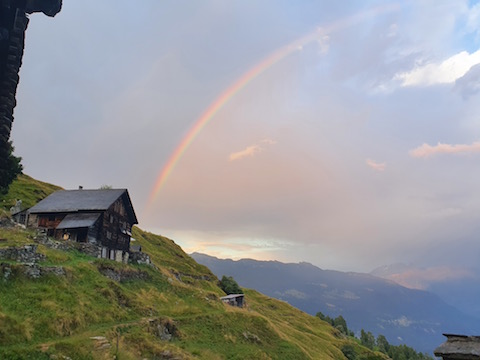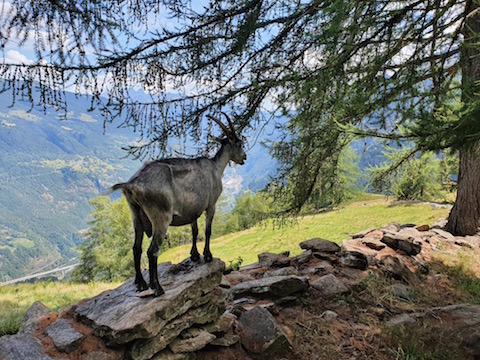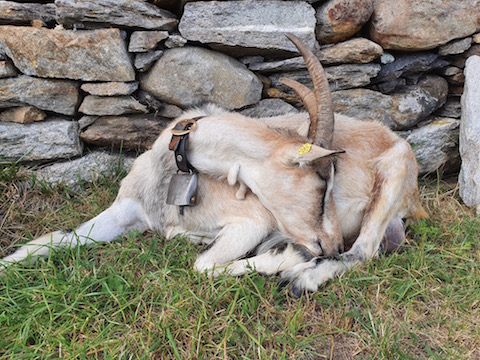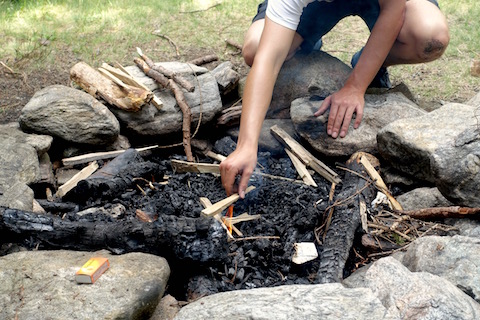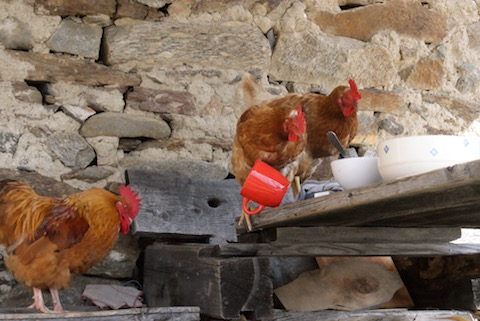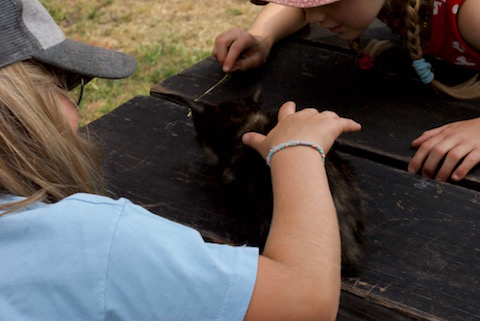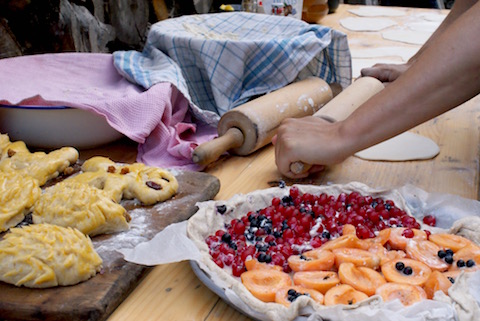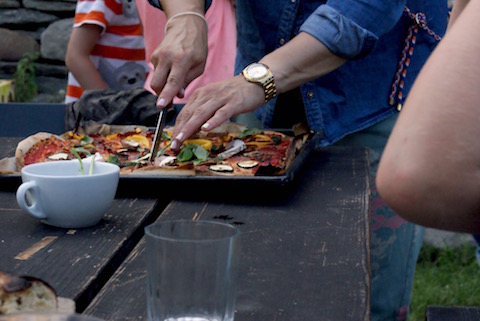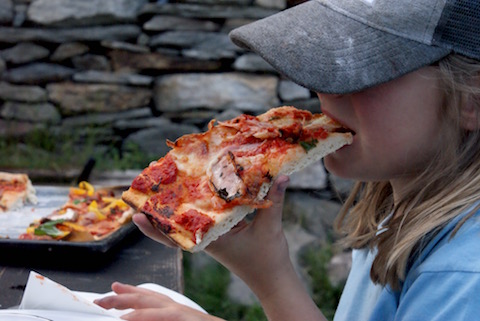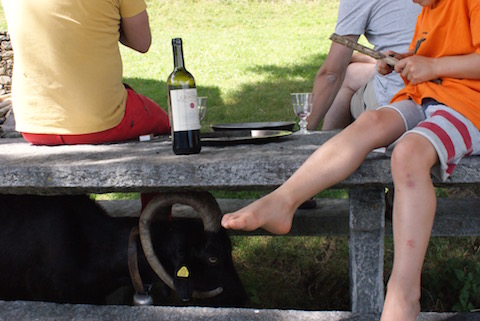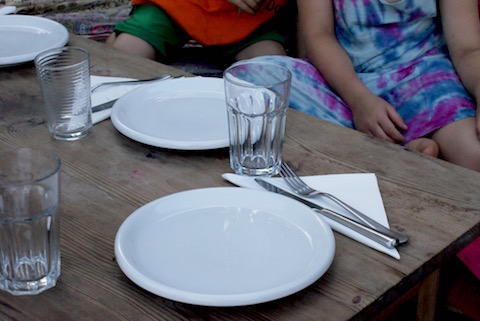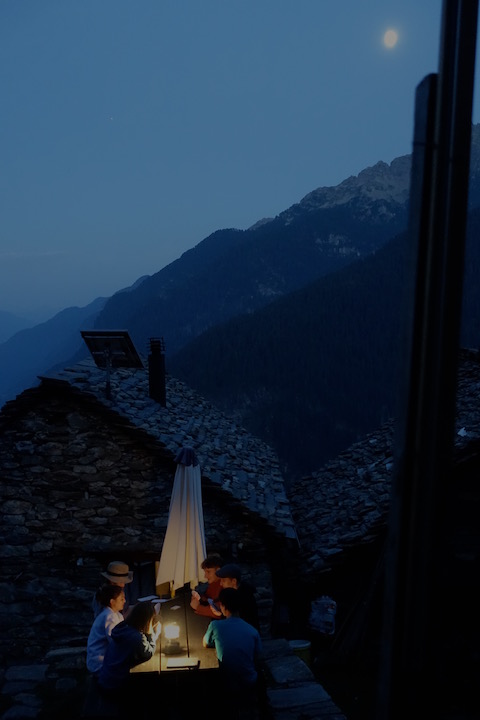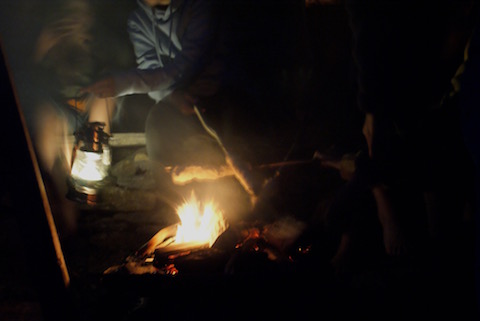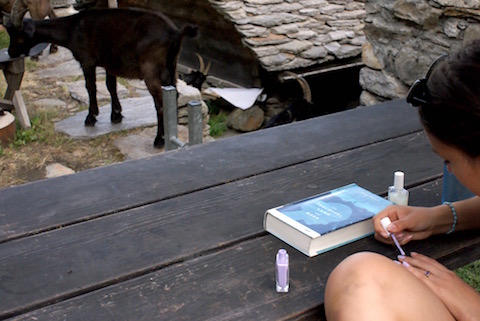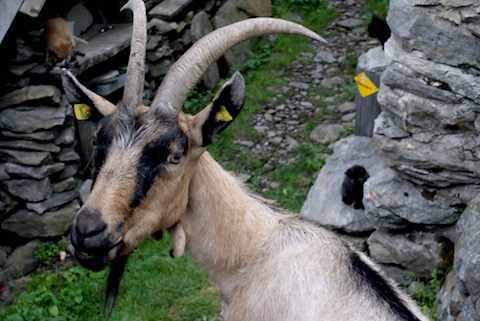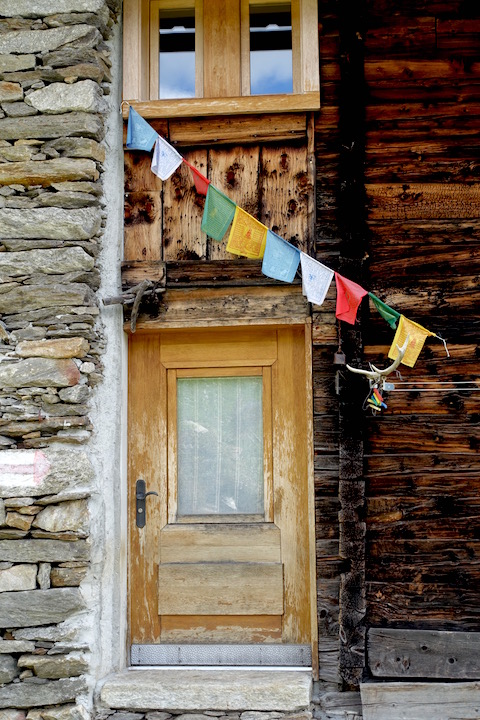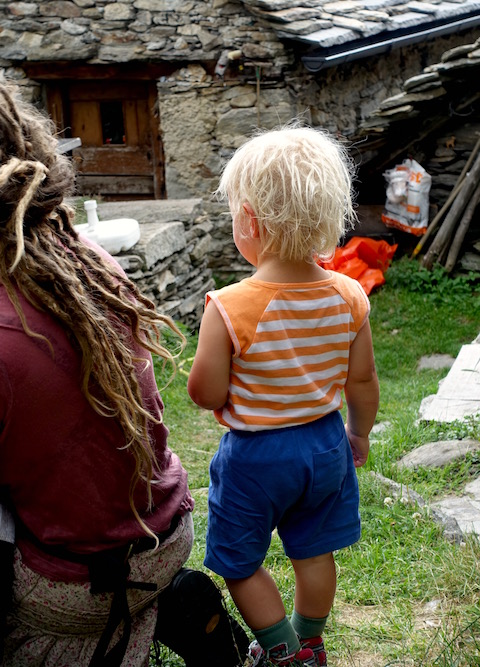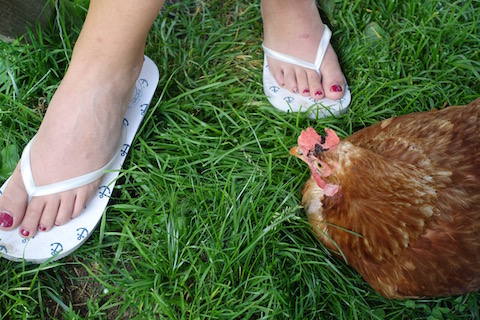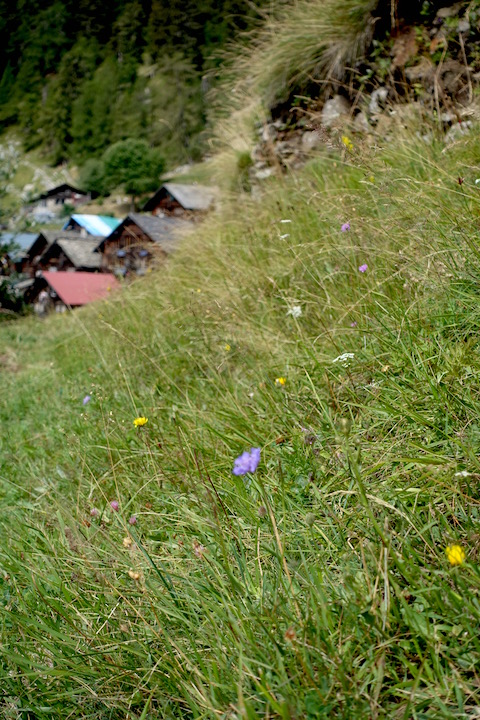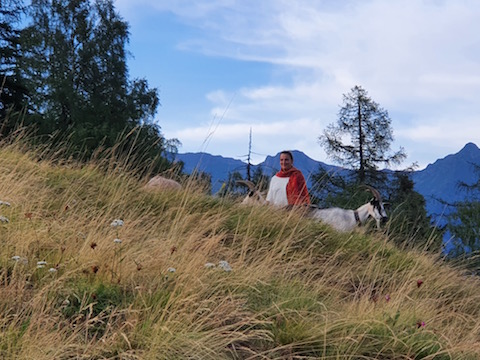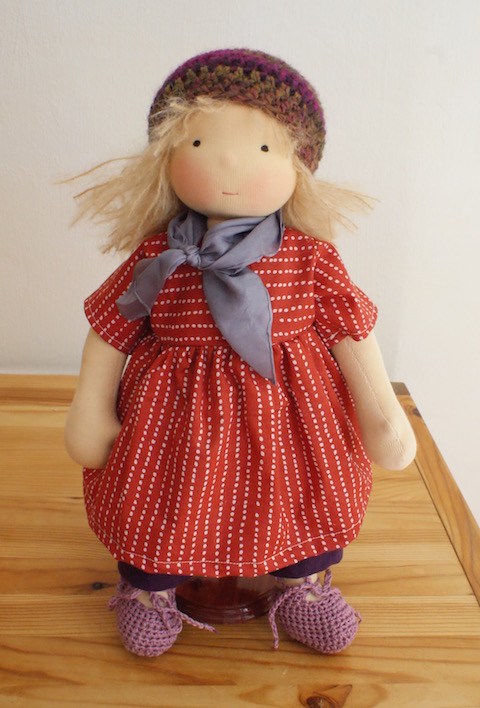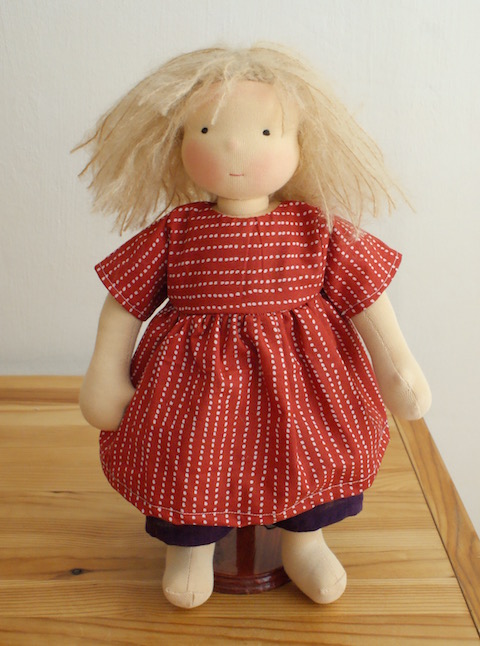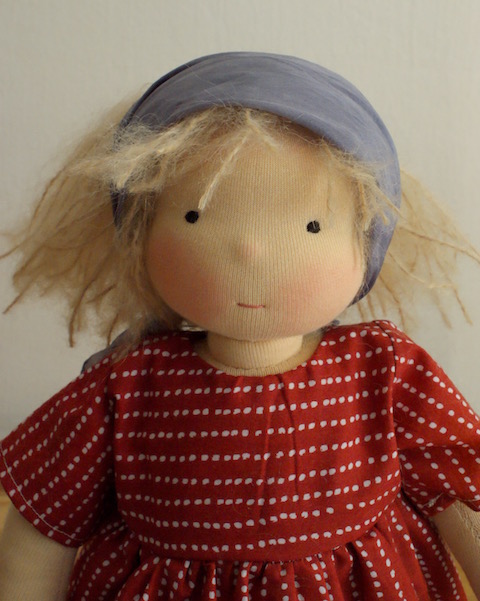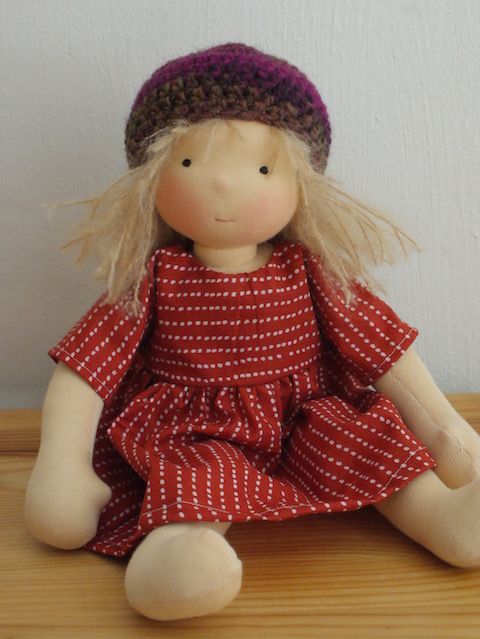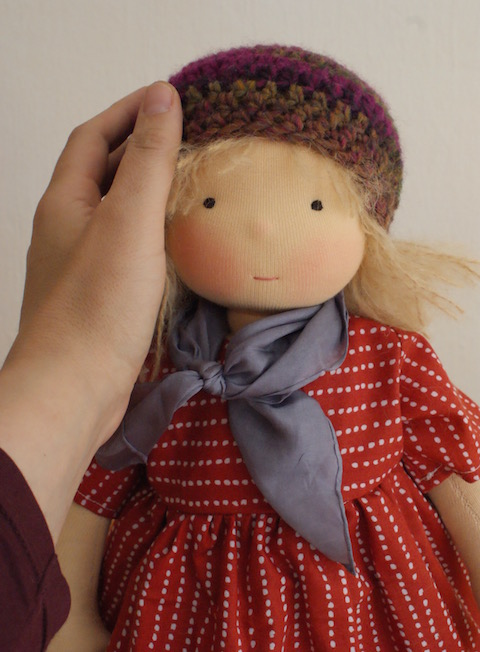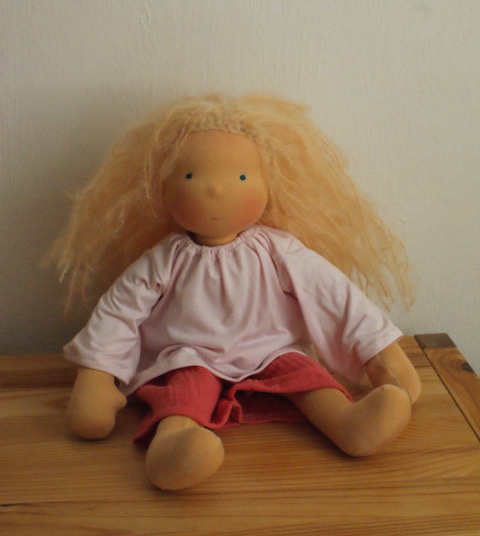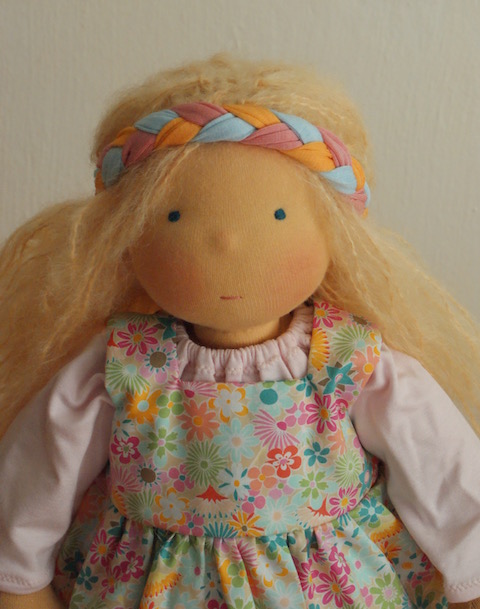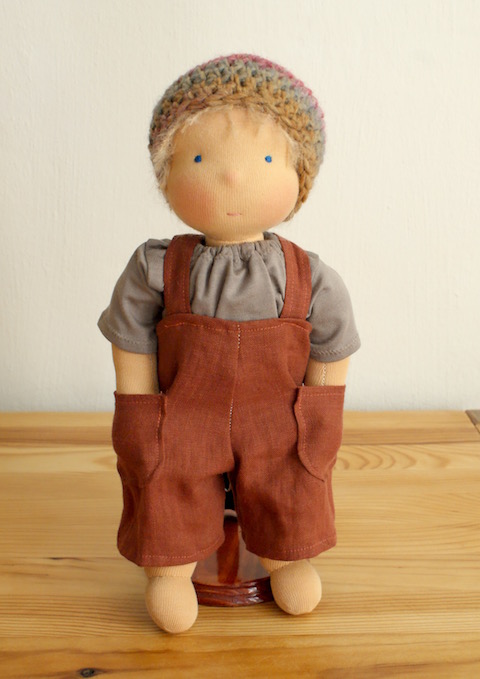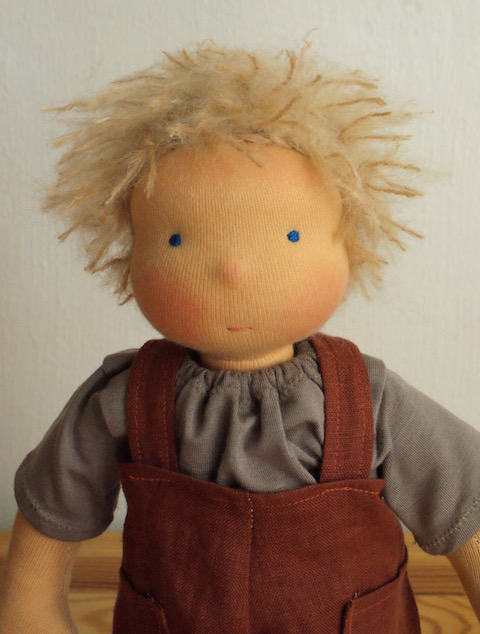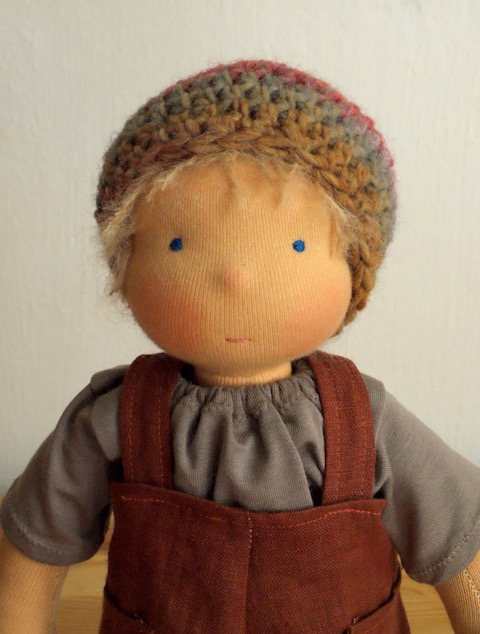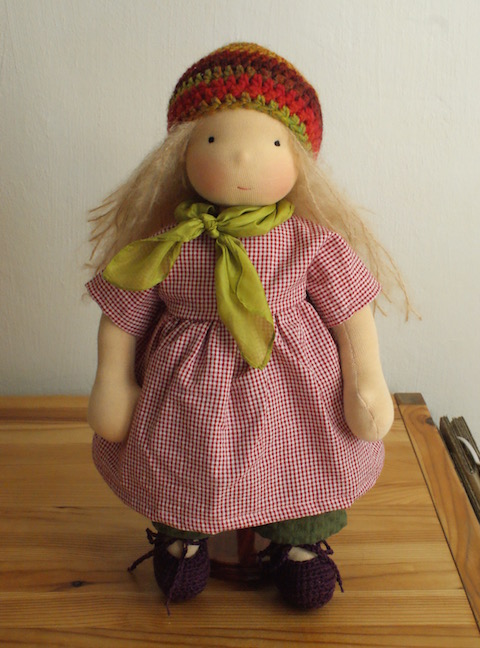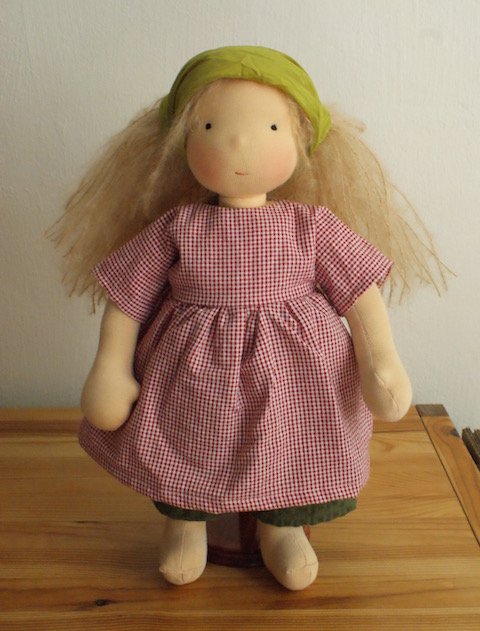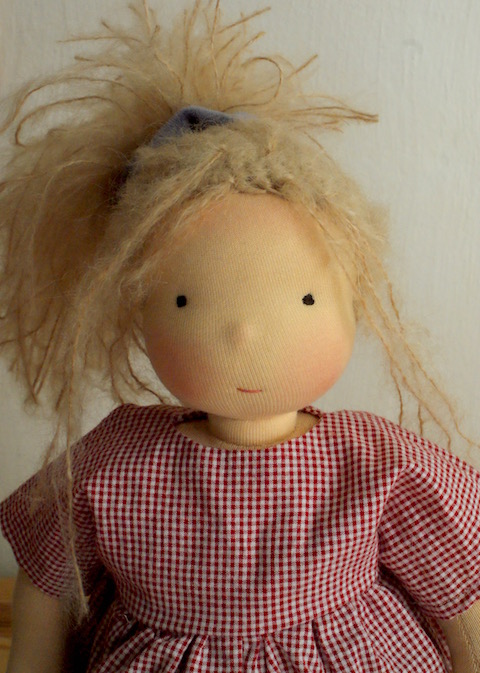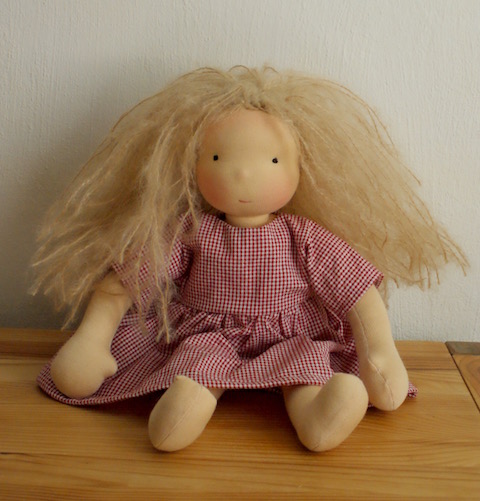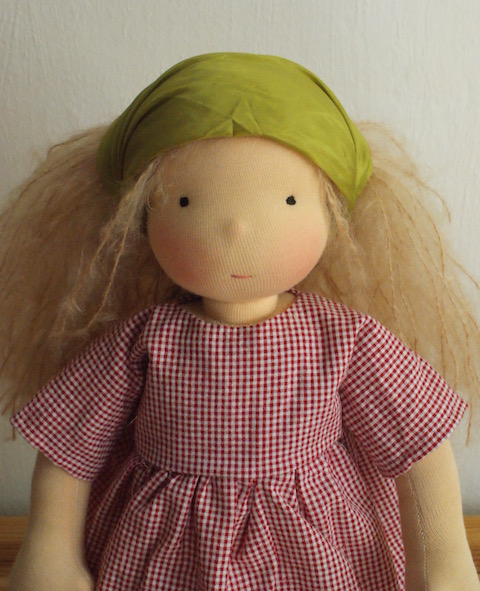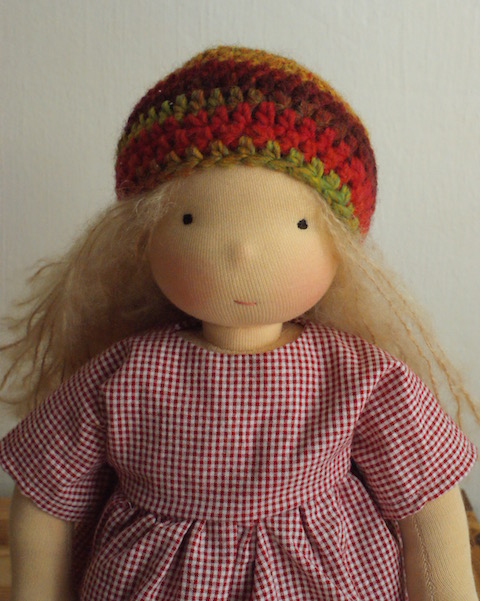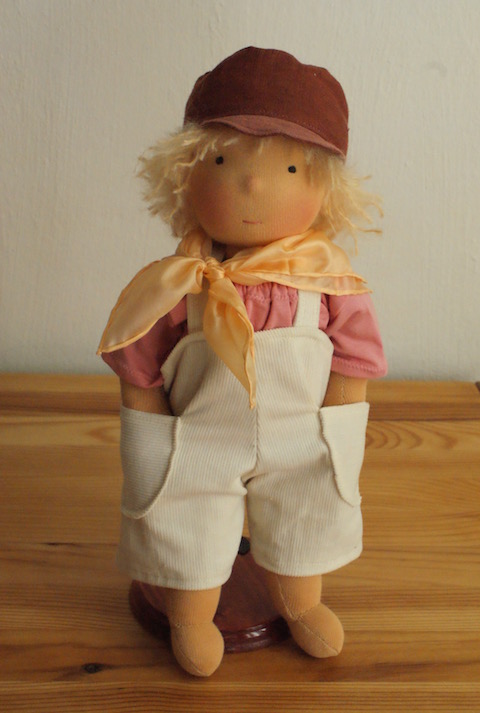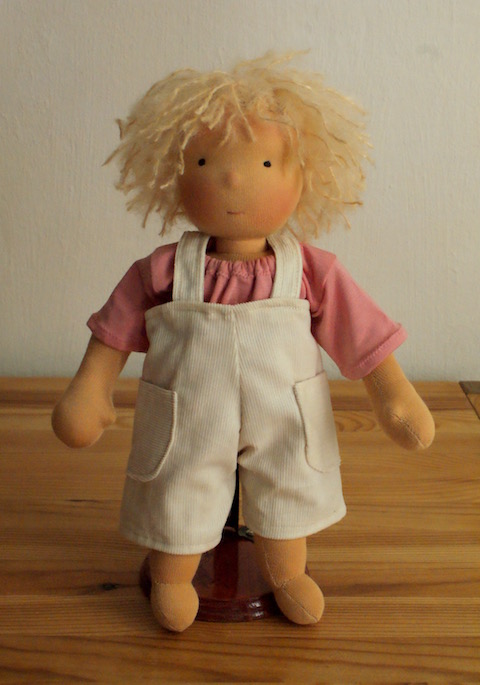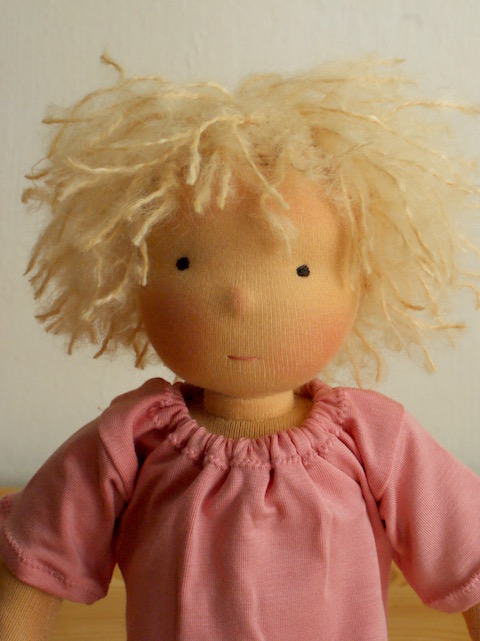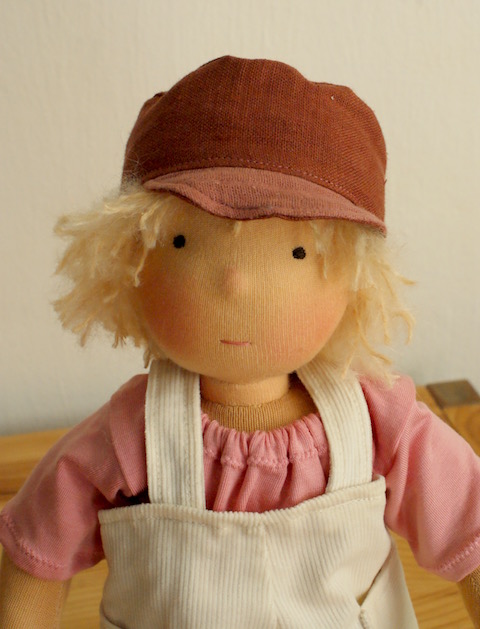




Vor den Puppen habe ich gestrickt wie eine Weltmeisterin, jetzt bin ich eher eine Schnecke, aber eine genießerische! Von Januar bis vorletzte Woche werkelte ich an einem Bären, den ich hier schon einmal gezeigt hatte.
Bereits damals schrieb ich, dass jeder Arbeitsschritt mir eine große Freude und ich schwer verliebt in Myrtil war. So blieb es bis zur letzten Masche, was vor allem an dem einzigartigen, herzallerliebsten Design und der supergut geschriebenen Anleitung lag. Noch nie zuvor hatte ich ein solch komplexes Teil gestrickt und mich dabei so sicher durch den Prozess geführt gefühlt.
Von Masche zu Masche wuchs mein Respekt für die Designerin Cinthia Vallet aus Frankreich und ich freue mich sehr, dass sie bereit war, mir ein paar Fragen zu beantworten, die ich hier mit euch teile.
Ich hoffe, ich kann euch Mut machen und mit meiner Begeisterung anstecken! Weiter unten findet ihr alle Details zu Cinthias Arbeit und dem anstehenden Knitalong für ihr neuestes Design, einen kleinen Maulwurf. Aber hier erst einmal das Interview, viel Freude damit!
What is your background as a designer? How did you get to toy making?
Let’s start with crafting, which is the starting point of the whole journey. I’m passionate about textiles, fabric, thread, wool. The first time i made toys, quite a long time ago, they were sewn, hand-sewn, they were already humanised animals dolls. I think the first ones were a horse with denim dungarees, a mouse with a very feminine apple green dress and a mole, mainly pink, with a floral dress. From that time, I’ve always had an attraction for animals dolls and i’ve sewn a lot. At some point, i had to let sewing a bit aside because of working obligations, and as a substitute, I re-discovered knitting which was much more easy to practise anywhere, in any pocket of time available. And overall I discovered seamless knitting which appeared to me like being so promising in terms of three dimensional making. My love for animal dolls and my new skills in knitting happily met. They had to wait for me to have more time to dig in to become fruitful together but the seed was planted.
As another ingredient and important part of my background, I have a passion for kids literature and illustration, my head is full of characters out of all the stories I’ve been reading for years. And as a former teacher, I like to think about the way to pass down skills. So creating knitted toys and writing patterns gather a lot of things I like with a good balance: crafting by hands, imagining characters as an illustrator could do (but without drawing), teaching how to make them to other knitters.
How does a typical character from Cinthia look like? And how does it feel to play with it?
It is always an animal. Yet an animal looking a bit like us humans, standing and dressed, having a first name and a last name, and a true personality. Oh and I like it to be smiley !
I like to imagine that playing with it is like carrying a friend everywhere, taking it to the library, to the park, at the beach, telling it a story, whispering it secrets, cuddling it of course. Sharing all the little daily moments of a kid’s life. It can sit, it can lay down, it can be dressed and undressed. I see my characters as true dolls. Garments and accessories are an important aspect of this playing; actually, I think this might be the best starting point for playing. The garments need to be removable and sturdy. When holidays time is coming, a tiny suitcase can be prepared and it’s a lot of fun and anticipation!
This is why my patterns include instructions to make garments also for your toy. First you will grow your woolly friend out of your needles and then you will give it extra love and attention by making it its clothes. And by doing that you know that the toy will be even more playful.
What makes a knitted creature a valuable toy for you?
I’m very attached to the idea of long lasting. It takes time to knit a toy, it is not instant, it’s a slow process in which you put a lot of intention, with enthusiasm and happiness along the making. I would say it’s an infused-with-love-and-passion toy. It happens sometimes that the recipient of the toy, when it’s your own kid for example, can attend the making off, and see how the toy is slowly growing, and wait for it to be done, while getting ready to welcome it. Even if the recipient is distant, you could share this slow growth.
Also, in knitting, you can quite easily source beautiful and ethical materials to make the toy, while keeping it affordable. You don’t need a lot of things and it can be carefully selected.
But in the end, knitting is only a medium, I see my little woolly friends as dolls to play with, and dolls have always been valuable toys. With my patterns, I’d like to provide knitters an enjoyable way to make dolls with their own craft.
My compliment for your patterns! What is important to you for a good pattern? And how did you learn to write such excellent instructions?
Thank you!
I would say I use my goal, which is basically to empower the knitters to knit these toys, as a north star to learn how I could write efficiently. I’m writing the patterns a bit as if I was teaching directly to the knitters. I would talk with my own ordinary words, I would try to pass down my passion and enthusiasm, as well as the skills needed to achieve the project. And above all I would like the knitters to be successful and happy. This is my guideline when writing, I try to be sure to reach these goals and except for the abbreviations which are indispensable, I value ordinary language rather than technical one.
I try to remember that something that can seem obvious for me because I design the toys, or for a very experimented knitter, is not necessarily obvious for a beginner. So I take the time to write down what needs to be more explicitly established before giving the proper technical instructions.
I clearly want to be as beginner friendly as possible. Nothing is out of reach, motivation and enthusiasm make wonders. I believe it can be easier making fiddly things with detailed instructions provided than making a so called easy thing with too few explanations. By trying to write down generously everything needed to be sure about what to do next, I’d like to build a safe bridge for everyone to cross the river. It’s still a learning curve, and I keep working to improve the bridge, pattern after pattern !
I must also add that I work with an amazing tech editor, Amelia Hodsdon (@woollenwords), and she is my own bridge to cross the river as well as my safety net with English words as they are not my first language.
Do you have a special tip for toy knitting? What are the aspects you pay attention to the most?
If you were about to start a knitted toy, I would tell you to choose a beautiful wool, a wool that you love and that you will enjoy knitting. Don’t be paralysed by the idea of wasting a too precious yarn for a toy. A toy is precious because of all the love it will receive. Pick something that makes you enthusiastic and even more motivated. As you will knit small circumferences in the round, I would tell you to go for your favorite and most comfortable-to-you method (double pointed needles or long circular for magic loop). If you’re totally new to knitting small circumferences in the round, I would advise going for magic loop as a start. I would also tell you that knitting a toy is not especially difficult. Trust your ability.
And, I would encourage you to get safety eyes, they are very easy to use and such a reward when finishing the face. It is worth!
In my process of writing the patterns, I pay a lot of attention to finishing, and I encourage to do so all along the making. Above all, what I pay the most attention to is the pleasure in the process. We all want to get the toy in the end, but being happy while making it is very important!
How do online communities like Ravelry and Instagram affect your creative work?
First I would say that it is fueling my work with motivation and enthusiasm. I get a lot of positive energy from feedbacks and sharings. This is truly wonderful to be able to see what people make with my patterns all over the world, it is magical. Each sharing is a treat for me and a surprise, because even if made out of the same patterns, all the little critters are uniquely infused by their makers.
Then, another very precious benefit i get from online communities are the connections with the yarn makers who are such an important part of the designing process too. When creating a new character, I work with a yarn in mind, and my work is a sort of tribute to this yarn. The connections are truly made possible via the online communities. Same for the testers. A sort of team is created around each design and I get so much support from this !
Also, my daily life is enhanced by the connections I can make with other small business owners. Sharings the highs and lows, the tips and tricks to keep moving, plotting collaboration projects, make this kind of work less lonely.
Your wishes for the future of your label?
Giving birth to all the characters I have in mind. So they could be less numerous to live in my brain.
Developing more wardrobes and accessories patterns. To get to play even more.
Putting kits together. Kits are truly talking to my inner child! Having everything packaged to craft something is a feast for me, a bit like the kits I was enjoying as a kid for Christmas. Even when I could gather most of the notions and materials from stash, I still enjoy a good kit as a special treat.
And making a book!
A book would indeed be great! Thank you so much, Cinthia. Your work and characters are a true inspiration and I had the greatest pleasure in making my Myrtil Bear. All the best to you and your creative knitting hands!
Cinthias Designs findet ihr hier auf Ravelry. Bei Instagram hält sie euch unter @fromcinthia auf dem Laufenden. Dort veranstaltet sie auch Knitalongs, als nächstes natürlich für ihren neuesten Entwurf Did + Merri Molly. Das passende Knit Kit mit wunderschönen hand- und naturgefärbten Garnen aus meiner Heimatstadt Berlin gibt es hier.
© Bilder Cinthia Vallet

